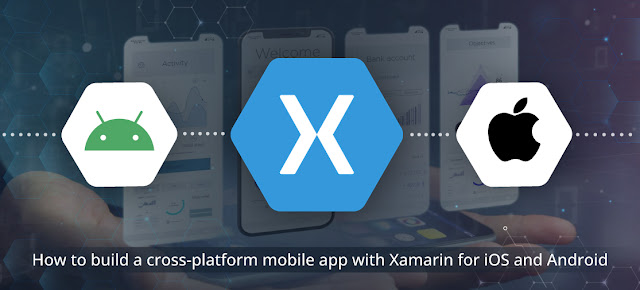What is Xamarin?
Being a robust cross-platform mobile app development can develop a single app for multiple devices. It's an enhanced platform for mobile applications that lets you create solutions for several platforms rather than one at a time. Therefore Xamarin is the most reliable language for complex applications.
While writing a cross-platform application using Xamarin the developers have 2 options to create a cross-platform application.
- Portable Class Library.
- Shared Project.
PCL allows you to write code that can be applicable among multiple platforms, but the only drawback you may face is that not all .NET APIs are available on multiple platforms.
But, if you are working on a shared project it gives you more control and enables you to develop platform-specific code for each platform you choose to support, giving you more control.
Code in a shared project may have compiler directives in it that, depending on which application project uses the code, activate or disable specific code parts.
Cross-platform code with MvvmCross
Future Trends of Xamarin in Cross-Platform Development
In the dynamic landscape of cross-platform development, staying ahead of emerging trends is crucial for developers seeking efficiency, scalability, and enhanced user experiences. Xamarin, a robust framework for cross-platform app development, continues to evolve, offering exciting prospects for the future. Let's explore the anticipated trends that will shape the trajectory of Xamarin in the realm of cross-platform development.
- Improved DevOps IntegrationDevOps practices play a pivotal role in the software development lifecycle, facilitating collaboration and automation. Xamarin is likely to enhance its integration with DevOps tools, streamlining the deployment, testing, and monitoring processes. This will result in faster development cycles, improved collaboration among development and operations teams, and overall increased efficiency.
- Cross-Platform Gaming with XamarinWhile Xamarin has primarily been associated with mobile app development, its potential in the gaming industry is expected to grow. Developers can anticipate better support for game development using Xamarin, opening up opportunities for creating cross-platform games with shared codebases.
- Focus on Accessibility and InclusivityThe importance of creating accessible and inclusive applications continues to gain prominence. Xamarin is expected to incorporate features and tools that make it easier for developers to design and implement apps that cater to diverse user needs, including those with disabilities
- Integration with Emerging Frameworks and LibrariesAs new frameworks and libraries emerge in the development ecosystem, Xamarin is likely to adapt and integrate seamlessly with these technologies. This flexibility will enable developers to leverage the latest tools and resources, staying at the forefront of technological advancements.
Conclusion
FAQ

Comments
Post a Comment